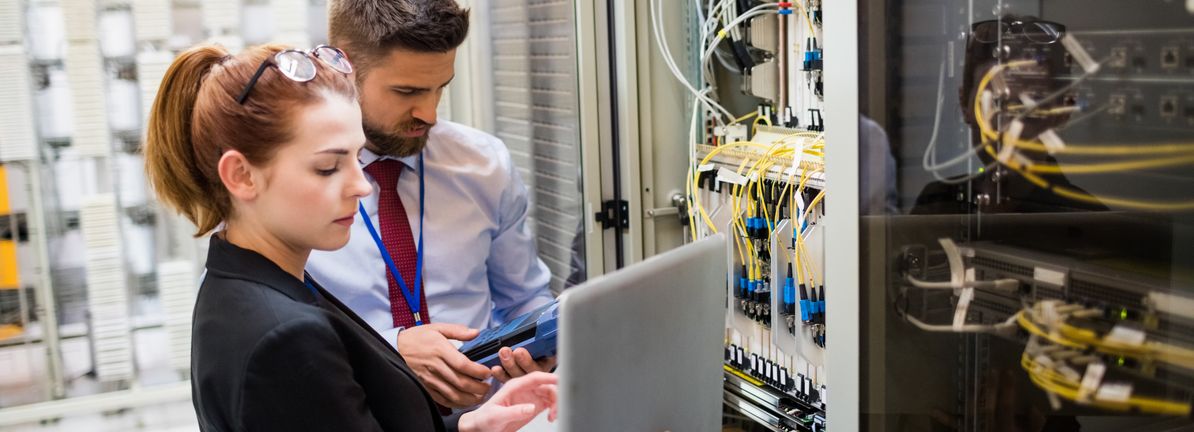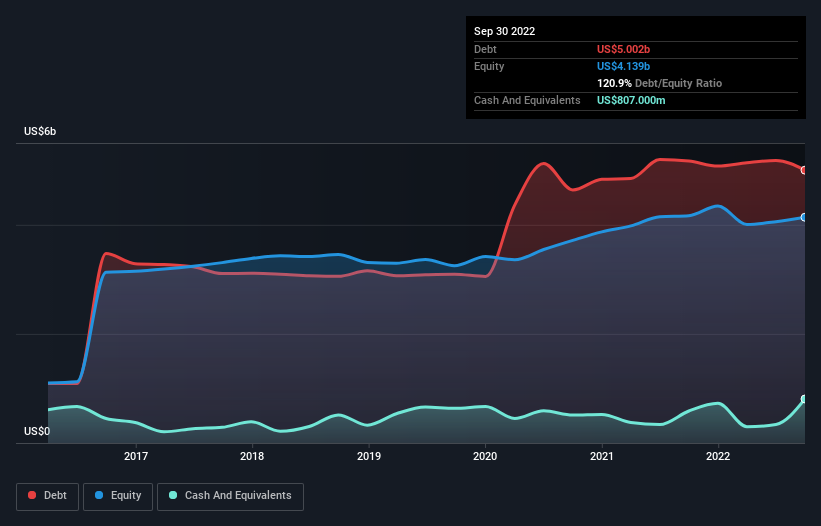
The external fund manager backed by Berkshire Hathaway’s Charlie Munger, Li Lu, makes no bones about it when he says ‘The biggest investment risk is not the volatility of prices, but whether you will suffer a permanent loss of capital.’ It’s only natural to consider a company’s balance sheet when you examine how risky it is, since debt is often involved when a business collapses. As with many other companies Leidos Holdings, Inc. (NYSE:LDOS) makes use of debt. But the real question is whether this debt is making the company risky.
When Is Debt Dangerous?
Debt is a tool to help businesses grow, but if a business is incapable of paying off its lenders, then it exists at their mercy. If things get really bad, the lenders can take control of the business. However, a more usual (but still expensive) situation is where a company must dilute shareholders at a cheap share price simply to get debt under control. Of course, plenty of companies use debt to fund growth, without any negative consequences. The first thing to do when considering how much debt a business uses is to look at its cash and debt together.
See our latest analysis for Leidos Holdings
What Is Leidos Holdings’s Debt?
The chart below, which you can click on for greater detail, shows that Leidos Holdings had US$5.00b in debt in September 2022; about the same as the year before. However, it does have US$807.0m in cash offsetting this, leading to net debt of about US$4.20b.

How Healthy Is Leidos Holdings’ Balance Sheet?
The latest balance sheet data shows that Leidos Holdings had liabilities of US$4.14b due within a year, and liabilities of US$4.82b falling due after that. Offsetting these obligations, it had cash of US$807.0m as well as receivables valued at US$2.28b due within 12 months. So its liabilities outweigh the sum of its cash and (near-term) receivables by US$5.87b.
This deficit isn’t so bad because Leidos Holdings is worth a massive US$13.4b, and thus could probably raise enough capital to shore up its balance sheet, if the need arose. But it’s clear that we should definitely closely examine whether it can manage its debt without dilution.
We use two main ratios to inform us about debt levels relative to earnings. The first is net debt divided by earnings before interest, tax, depreciation, and amortization (EBITDA), while the second is how many times its earnings before interest and tax (EBIT) covers its interest expense (or its interest cover, for short). Thus we consider debt relative to earnings both with and without depreciation and amortization expenses.
Leidos Holdings has a debt to EBITDA ratio of 2.9 and its EBIT covered its interest expense 5.7 times. Taken together this implies that, while we wouldn’t want to see debt levels rise, we think it can handle its current leverage. Sadly, Leidos Holdings’s EBIT actually dropped 7.5% in the last year. If earnings continue on that decline then managing that debt will be difficult like delivering hot soup on a unicycle. The balance sheet is clearly the area to focus on when you are analysing debt. But it is future earnings, more than anything, that will determine Leidos Holdings’s ability to maintain a healthy balance sheet going forward. So if you’re focused on the future you can check out this free report showing analyst profit forecasts.
Finally, a business needs free cash flow to pay off debt; accounting profits just don’t cut it. So we clearly need to look at whether that EBIT is leading to corresponding free cash flow. During the last three years, Leidos Holdings generated free cash flow amounting to a very robust 91% of its EBIT, more than we’d expect. That positions it well to pay down debt if desirable to do so.
Our View
On our analysis Leidos Holdings’s conversion of EBIT to free cash flow should signal that it won’t have too much trouble with its debt. But the other factors we noted above weren’t so encouraging. For example, its EBIT growth rate makes us a little nervous about its debt. Looking at all this data makes us feel a little cautious about Leidos Holdings’s debt levels. While debt does have its upside in higher potential returns, we think shareholders should definitely consider how debt levels might make the stock more risky. There’s no doubt that we learn most about debt from the balance sheet. But ultimately, every company can contain risks that exist outside of the balance sheet. We’ve identified 1 warning sign with Leidos Holdings , and understanding them should be part of your investment process.
Of course, if you’re the type of investor who prefers buying stocks without the burden of debt, then don’t hesitate to discover our exclusive list of net cash growth stocks, today.
What are the risks and opportunities for Leidos Holdings?
Leidos Holdings, Inc., together with its subsidiaries, provides services and solutions in the defense, intelligence, civil, and health markets in the United States and internationally.
Rewards
-
Trading at 29% below our estimate of its fair value
-
Earnings are forecast to grow 13.4% per year
Risks
Have feedback on this article? Concerned about the content? Get in touch with us directly. Alternatively, email editorial-team (at) simplywallst.com.
This article by Simply Wall St is general in nature. We provide commentary based on historical data and analyst forecasts only using an unbiased methodology and our articles are not intended to be financial advice. It does not constitute a recommendation to buy or sell any stock, and does not take account of your objectives, or your financial situation. We aim to bring you long-term focused analysis driven by fundamental data. Note that our analysis may not factor in the latest price-sensitive company announcements or qualitative material. Simply Wall St has no position in any stocks mentioned.
Source link
